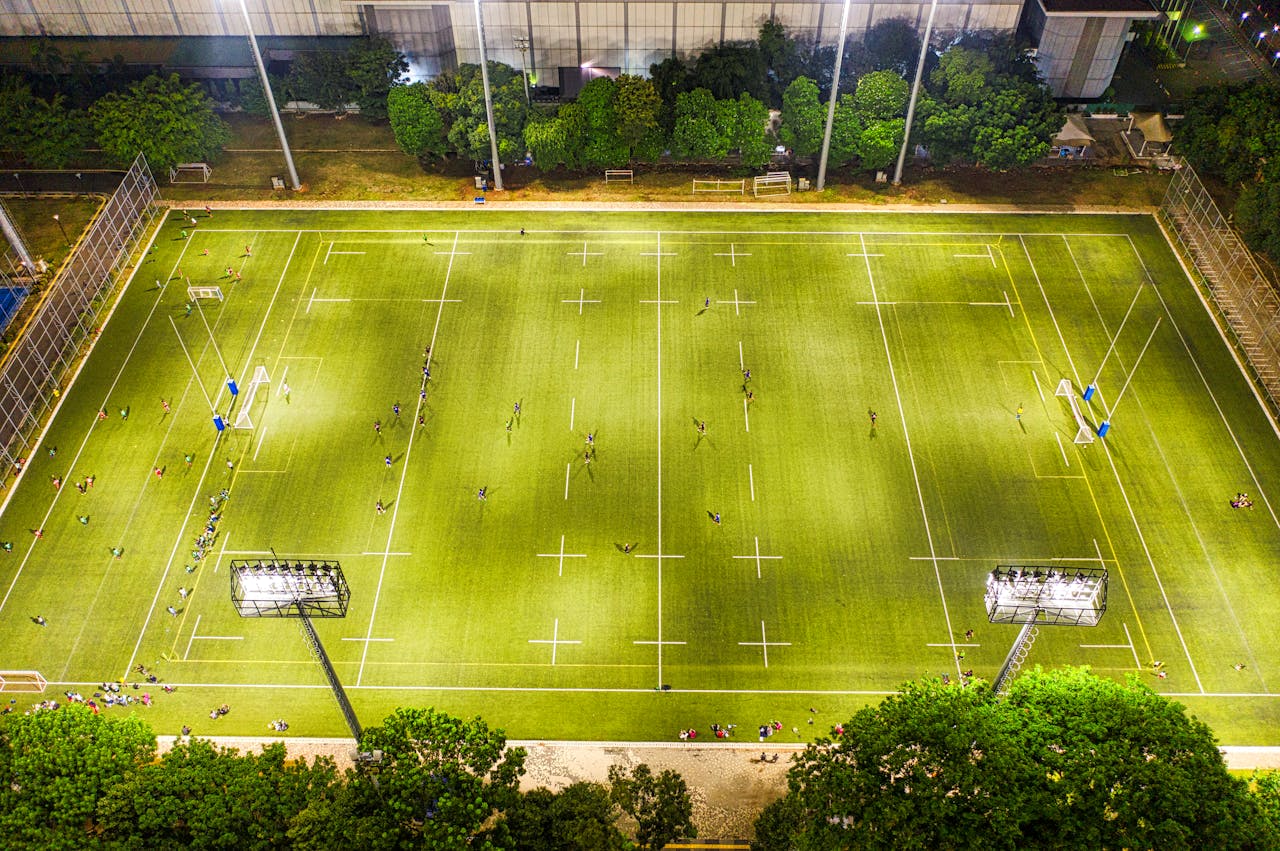Football in the UK is a game that has constantly evolved over the years. The sport has seen changes in the way it is played, coached, and viewed. It is continuously influenced by innovations and advancements in technology. In recent years, one such innovation that has taken the footballing world by storm is the use of drones for filming training sessions. This article will delve into the advanced drone filming techniques that UK football coaches can use for tactical training and how it can improve the overall performance of the team.
The Role of Drone Technology in Football
Drones have become an integral part of the modern football landscape. Initially used for capturing breathtaking aerial views of stadiums, they have now found a unique application in the realm of tactical training.
A lire aussi : How can UK track athletes effectively use resistance bands to improve hurdle technique?
The introduction of drones in football training is a game-changer. They offer a bird’s eye view of the pitch that traditional cameras can’t provide. Coaches can analyse the whole team’s performance, identify weaknesses and strengths, and monitor individual player’s movements closely.
The emergence of drone technology in football has opened up an entirely new perspective for coaches. It has given them a valuable tool that can significantly enhance their team’s training and performance.
A découvrir également : What are the best core strengthening exercises for UK competitive sailors to maintain boat balance?
Advanced Drone Filming Techniques for Tactical Training
The real game-changer lies in the use of advanced drone filming techniques that can provide crucial data for tactical training. Drone technology has evolved to the point that it can offer more than just aerial views. It can provide real-time data, track individual player’s movements, and even monitor ball control and passing accuracy.
One of the advanced techniques is the use of a follow-me drone. This drone is programmed to follow a specific player throughout the training session. It provides a comprehensive view of the player’s movements, reactions, and overall performance.
Another advanced filming technique is the use of multiple drones. With multiple drones, coaches can capture views from different angles, providing a more rounded picture of the training session. This technique allows for a thorough analysis of training exercises, including player positioning, ball movement, and team coordination.
Utilising Drone Data for Tactical Training
The data collected by drones during training sessions is immensely valuable. It gives coaches a detailed, objective view of their team’s performance. This data can be used to develop tactical strategies, identify weaknesses and areas for improvement, and assess individual player’s contribution to the team.
For example, drone data can be used to analyse the effectiveness of set plays. It can provide insights into player positioning, movement of the ball, and timing of runs. Using this data, coaches can fine-tune their tactics for set plays, increasing their team’s chances of scoring a goal.
Similarly, drone data can be used for player development. By tracking a player’s movements, coaches can assess the player’s fitness levels, skill sets, and decision-making abilities. This information can be invaluable in developing individual training plans and improving player performance.
Drones and Video Analysis for Tactical Training
Not only can drones collect data, but they can also capture high-quality video footage of training sessions. This footage can be analysed in real-time or reviewed post-session, providing a powerful tool for video analysis.
Video analysis allows coaches to break down the game into smaller segments, analyse player performance, and identify key moments. It also allows them to provide visual feedback to players, helping them understand their role in the team better and improve their tactical understanding.
By combining drone footage with video analysis software, coaches can create a comprehensive visual learning tool. They can highlight key moments, annotate videos, and create playlists of specific situations. This type of video analysis can significantly enhance the effectiveness of tactical training sessions and improve overall team performance.
Challenges and Solutions in Implementing Drone Technology
Despite the obvious advantages, implementing drone technology for football training can present some challenges. The initial cost of purchasing drones and related equipment can be high. There are also operational challenges such as obtaining necessary permissions, ensuring safety, and training staff to operate drones.
However, the long-term benefits of using drones for tactical training far outweigh these challenges. The investment in drone technology can lead to significant improvements in team performance, which in turn can lead to success on the football pitch.
As for the operational challenges, they can be tackled by hiring a professional drone operator or a sports analyst with knowledge of drone technology. Additionally, there are many reputable drone training courses available that can help staff get up to speed with operating drones.
Drone technology and its application in football training is an exciting development that has the potential to revolutionise the way the game is taught and played. It provides coaches with a plethora of data and insights that can greatly enhance tactical training and improve team performance.
Drone Technology in the Football Academy Training Sessions
Drones have found a significant place in football academy training sessions, and their contribution to the advancement of football in the UK is immense. These devices provide an exceptional method for performance analysis and have changed the dynamics of how football is coached and played.
Investing in drone technology for training sessions allows coaches to get a superior perspective of their team’s performance on the field, pinpointing exactly where the strength and weaknesses lie. It is a valuable tool for the number of players on the team, allowing for precise assessment and a data-driven approach to coaching.
For instance, Pep Guardiola, known for his innovative football coaching techniques, utilises drones in his training sessions to closely monitor his player’s movements, their ball control, and their decision-making abilities. This level of scrutiny was previously impossible with traditional filming techniques.
Moreover, drones have also made it possible for coaches to guide and explain tactics to their players more effectively. The high-performance, aerial view captured by drones provides a clear, unobstructed view of the entire pitch, making it easier for coaches and players to comprehend the tactics and strategies being discussed.
David Powderly, a respected coach analyst and the head of the Alicante football academy, has been pioneering the use of drones for training analysis. He believes that drones can provide insights that can revolutionise youth soccer by enhancing the tactical training methods used by coaches.
Drones Driving Goal Scoring and Training Exercises
In the realm of training exercises, particularly those aimed at improving goal scoring, drones have proven to be incredibly useful. This technological tool can capture every single movement, from the movements of the weak foot to the position of every player during the attempt to score a goal. These are valuable insights that can help the coach to fine-tune their strategies and improve the performance of the team.
The data collected by drones during these exercises is a treasure trove for any coach. Video analysis of the footage can help the coach to break down the plays into smaller segments, helping to identify key areas for improvement.
Through this, coaches can help players understand their role in the team better and improve their tactical understanding. The use of drones in training exercises has proven to be an excellent tool for improving decision making, ball control, and overall performance of the team.
Moreover, players can also benefit from drone footage. By reviewing their performance, players can identify their own strengths and weaknesses, improving their self-awareness and personal development. This directly contributes to high-performance on the pitch, as players are better equipped to understand their roles and responsibilities in the team.
Conclusion
The introduction of drone technology in football training has created a paradigm shift in the way the game is coached and played. Drones have become an indispensable tool for tactical training, offering a bird’s eye view of the pitch, tracking individual player’s movements, monitoring ball control, and providing real-time data.
Despite the initial cost and potential operational challenges, the long-term benefits of this technology are undeniable. Drone technology can lead to remarkable improvements in team performance and provide a wealth of data for performance analysis.
Given the potential of drone technology to revolutionise football, it’s clear that drones will continue to play a vital role in the future of football coaching and training. And as technology continues to evolve, it’s exciting to envision how it will continue to shape the beautiful game.

